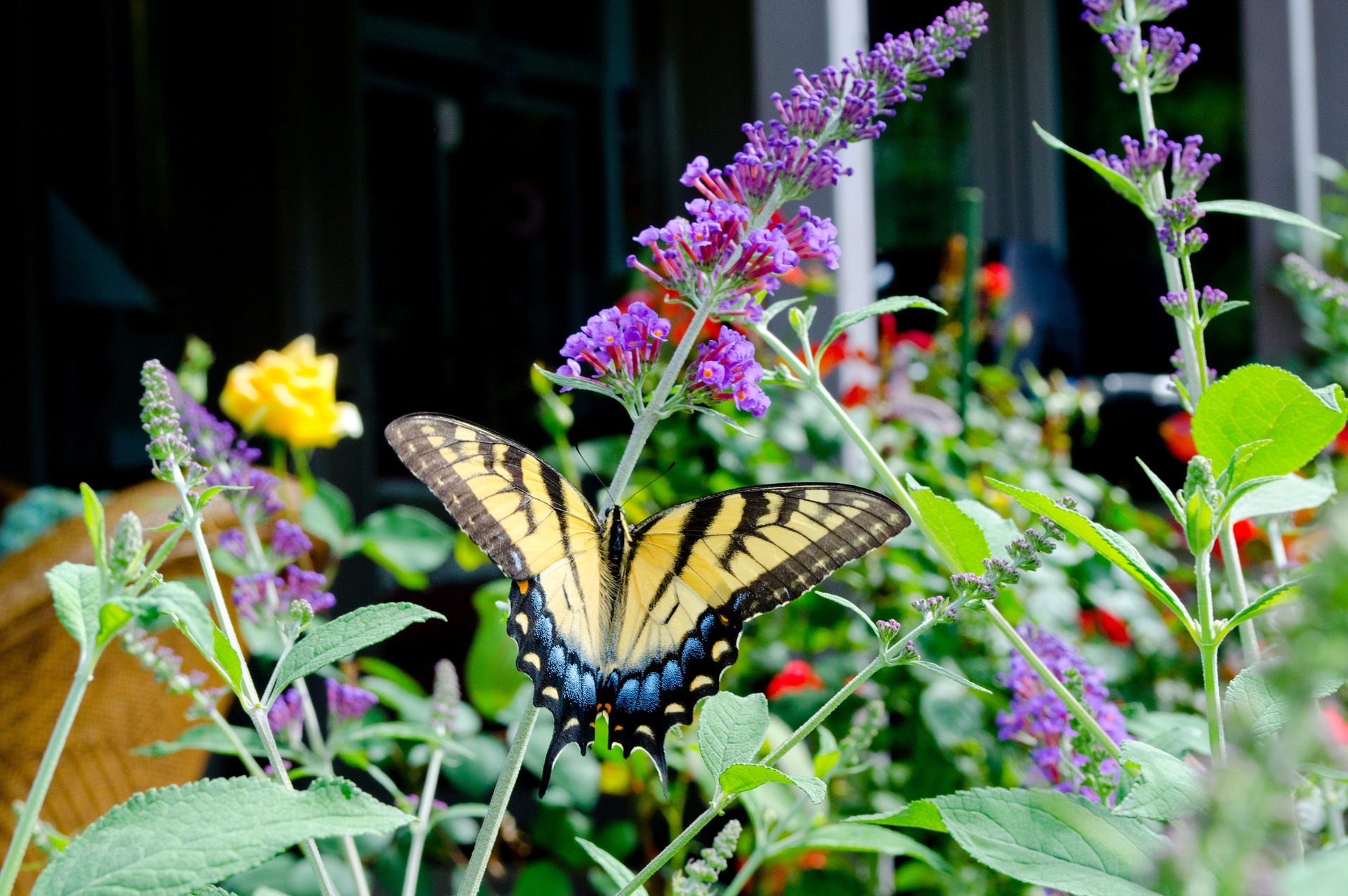
Attract beautiful butterflies to your garden with a butterfly bush.
Grow a Garden That Butterflies Can’t Resist—Just Don’t Forget to Deadhead!
The Almanac Garden Planner - Use It Free for 7 Days!
Plan your 2025 garden with our award-winning Garden Planner.
Types
We are no longer recommending new plantings of the butterfly bush, given its categorization as an invasive in most of North America. Instead, we recommend using plants that better support the native landscape and food web, given our declining pollinator population. See alternative plants that attract butterflies.
Native Alternatives to Butterfly Bushes
Here are a few great flowering alternatives that also serve as host plants for caterpillars:
- Asters (Symphyotrichum)
- Beardtongue (Penstemon)
- Bee Balm (Monarda)
- Black-Eyed Susan (Rudbeckia)
- Columbine (Aquilegia)
- Coneflowers (Echinacea)
- Goldenrod (Solidago)
- Irises (Iris)
- Milkweed (Asclepias)
- Rhododendrons & Azaleas (Rhododendron)
- Spicebush (Lindera)
- Strawberries (Fragaria)
- Verbena (Verbena)
- Viburnum (Viburnum)
- Yarrow (Achillea)
See a list of host plants native to your area here: Native Plant Finder
ADVERTISEMENT
I have three different varieties of butterfly bush and all are thriving. I live out west where the plants are not invasive. I give them a hard pruning in January or February and deadhead throughout the year. I learned from a nurseryperson to give them an overhead spray of water during the dusty summer months. If let go, the plants' stomas (pores) become clogged, the plant lets out a distress call alerting neighboring plants and hungry insects. Since I've followed the nurseryperson's advice I've had no problems. I've found the plant lives up to its name by attracting a variety of butterflies (and bees).
FA wrote: The butterfly bush does provide adult butterflies with nectar similar to that of many flowers. However, it is not a “host plant” for butterfly larvae; if you want the butterflies to stay, be sure to add native host plants such as milkweed, aster, and dill.
Hi Catherine, thank so much for your information about how this species is invasive. I'm glad you encourage people to go with native plants. Please keep this up!
Hi Catherine, thank so much for your information about how this species is invasive. I'm glad you encourage people to go with native plants. Please keep this up!
I am glad you point out the deficiency of the butterfly bush and give alternative but I wish you had done the article on this alone instead of putting the bush on the spotlight. It is not a native plant, does nothing for butterflies except provide a quick snack and distract them from pollinating the native pollinators.
I am grateful for the list of alternatives.
I live on Vancouver Island where things tend to grow extremely well. I love the looks of butterfly bush and was hoping to get one until I attended a talk on alien invasive species. Butterfly bush was right up there along with yellow flag irises, giant hogweed, knotweed and daphne. These invasive species are taking over so that native plants are dying out and consequently wildlife is losing food sources and habitat. I'm sure butterfly bush is native somewhere but it's a bad idea for this area! I've already spent hours trying to dig out the matted mass of yellow iris rhizomes from a small pond in my garden. I don't know if I'll ever get them out. They are so pretty when they bloom but who knew? The Canadian government has invasive species resources for identification and offers alternatives for planting. I'd encourage all of us to do our homework before we bring home that "vigorous" plant from the nursery!
Hi! My Mother in law gave me a butterfly bush that was transplanted from her yard down our road. It's huge, and happy,but has never had flowers. I trim it every spring. Any advice would be appreciated!
Hi, Abbey. It sounds like your butterfly bush might be stressed. Is it planted in a spot where it gets a lot of sun? That is important. Also, go easy on the fertilizer. Sometimes too much fertilizer can encourage leaf growth but stunt blooms. If this season once again disappoints without blooms, we would suggest cutting it down to about four inches above the soil in early spring. Good luck!
Hi, Question: 2 out of 3 of my butterfly may possibly be dead, one of which is 5 feet from the other. I'm hoping they are going to start new growth. I don't cut or prune them. I'm not sure what to do, I've read to trim them (dead head) then one article said cut them to the ground. Does any one have any different ideas or let me know what I should do. Thank you.
Rick
Hi, Rick. The best thing to do is to severely cut the bush back. The sooner the better. This type of care is done in late fall or early spring.











